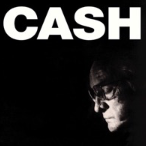Leaderboard
Popular Content
Showing content with the highest reputation since 02/13/2025 in all areas
-
See pages 13-14 of their report: https://www.fairfax.ca/wp-content/uploads/2023-Fairfax-Financial-Holdings-Limited-ESG-Performance-Report.pdf Overall, it seems that they have done well over the last few years with the risk 'appetite' aspect and maybe they are getting better? It may take something like 250 years to know with more certainty though.1 point
-
Yeah, I'm not particularly upset over that...most of them had to go! But your argument is like being in prison and having to choose between which two penis' do you want to be penetrated with...frankly, neither! But I see you've chosen one! Cheers!1 point
-
i received my copy few weeks ago. thanks for the thread guys. I think I ll have a go at these F Chou letters. I prefer Chou than in your face types like Ackman. The Forbes article from 3 years ago alludes to Francis wanting to become as big as Berkshire, is that truly the vision !?! Surely not as a private company PS: Forbes perhaps can tune down the rhetoric and maybe say as big as Fairfax. Or Markel for the American audience.1 point
-
It’s clearly a well managed bank but the catch is it’s Egypt where inflation is ~25%. They say “unfortunately” the depreciation of the currency has taken returns from 21% in local FX to 1% in dollars, but that’s exactly what we should expect - we gotta adjust nominal returns expectations for the local FX depreciation given 20%+ inflation differentials. Not monopoly money but close! That doesn’t mean it can’t be a good investment.1 point
-
1 point
-
Right, we discussed this a few days ago. Seems like the answer is, indefinitely! Fairfax made about $2.4b in net earnings APART from investment gains last year (underwriting, interest income, share of earnings of associates), so it is at about 13 times earnings even without its investment gains (or 9 times earnings if you include the investment gains. On the thesis that they will never pick good equity investments or make any money from them except by luck, they're still cheap, half of Intact's multiple. And Fairfax's might occasionally make a gain on investment too...1 point
-
I'm not so hot on EPIC Systems overall. Having watched its adoption and implementation at a large hospital system, it's terrible software that requires huge amounts of in-house effort to keep maintained. The only thing is that between EPIC and Cerner neither is very good. I fully expect AI and software innovation to come for EHR, ERP, and business process software developers. What appear to be moats now because of complexity will be worn away by AI/software development streamlining the innovation of these complex systems.1 point
-
1 point
-
Putin wasn't getting what he wanted under Biden. It's now being handed over to him with zero casualties and they won't give up anything. Putin just took advantage of a weak leader in Trump and Trump is taking advantage of a leader who is trying to save his country. Two fucking losers that you are proud to trumpet! Cheers!1 point
-
What the hell! When did he try and strong arm the President? Jesus!1 point
-
@Sweet, Mr. Vance is referring to what has been of confidential communication with Ukraine / Mr. Zelenskyj, and Mr. Zelenskyjs attitude and behavior under these talks and negotiations without Mr. Zelenskyjs accept. That is just such a no-go. Please remember here, I'm not accusing Mr. Vance of lying. Mr. Vance has done the same with regard to communication with political leaders and representatives of NATO-allies, Mr. Vance saying 'they in public talk about we [the allies, John] will provide unlimited support to Ukraine', while when we are talking with them on the phone it is totally different' [<- or something similar]. Again, that is just such a no-go. Please remember here, I'm not accusing Mr. Vance of lying. - - - o 0 o - - - Mr. Vance is going to loose personal power and influence pretty fast, because gradually he'll experience, that noone want to talk to and with him about anything any longer, eventually. I suppose anyone with practical experience in such matters woulden't dare to provide some advice on that matter to him, like for Mr. Trump, because all with knowledge and experience on the matter in the current administration are scared shitless from doing so.1 point
-
The position of Ukraine and Zelensky is completely logical and rational. Trump fully follows Putin’s line: Ukraine must cede the Russian-speaking territories and become fully neutral. This means no EU or NATO membership and demilitarization (a military limited to a maximum of 85,000 troops, missiles with a maximum range of 40 km, etc.). So, if no security guarantees are attached to this, Ukraine would be completely defenseless in the future, entirely at the mercy of Russia’s goodwill. Trump wants a quick peace, he wants Ukraine’s minerals, but he refuses to provide any security guarantees to Ukraine. During the argument in the White House, this was clearly the key issue. If you listen carefully, you’ll hear that Zelensky is demanding nothing but security guarantees—something Trump and Vance are unwilling to grant him. If Zelensky were to accept the deal Trump is putting on the table, he would be utterly naive. Who would willingly give up all their leverage without any guarantees? For Ukraine, this would be nothing less than total and unconditional surrender. Given the situation on the battlefield and Ukraine’s position in Europe, it seems that Zelensky and Ukraine still have other options besides complete and unconditional capitulation... so his response is not driven by a lust for war or territorial demands, but is his only option at the moment... I really don't envy that man's position !1 point
-
Wait, you're questioning the integrity of a guy fighting to keep his country and himself alive, while the biggest huckster in U.S. history lives and rules the White House? And all of his minion hucksters are sucking at his teets as he sows chaos around the world. This reminds me of the Omen III, when Damien became President. Trump isn't Jesus, he's the devil incarnate! Maybe the Christian right will get to witness The Rapture...only they'll be on the wrong side of it! Cheers!1 point
-
If Trump really wants out of the international arena why is he involved in a peace deal in Ukraine that nobody but Russia wants (because he sides with them), makes a move on Greenland and plans to create a Las Vegas Trump resort in Gaza? This doesn’t look like a focus on domestic policies to me. The thing is that Trump doesn’t want out, he can’t stand not being in the center of attention and thinks that everyone has to dance to his fiddle even if he stops putting anything in. In the meantime he is moving towards to make America an old fashioned 19th century Imperialist power which will manifest itself likely in a move on Greenland next. It would not be too surprised if little green men show up there and they won’t be from Russia.1 point
-
Four Nations USA vs Canada on right now. Probably some of best hockey you’ll ever see.1 point
-
Yes, I do. I wouldn’t have been buying up to last week and have 49% of my net assets in it if I didn’t think so. As I tried to explain in the substack, I use a 10% hurdle rate which means there are an abundance of opportunities in the current market that meet my hurdle. What makes FFH special enough to demand half my capital is twofold. To start, the hurdle rate seems likely to be exceeded over the next 5 years by a wide margin. I consider the chances average ROE exceeds 15% over that period to be 90%+ so the odds of exceeding 10% are even higher. I think the odds of 25% are higher than 10% by a wide margin. As a probabilistic investor, that’s a very special set up on fundamentals alone but on top of that the odds for multiple expansion seem very high and are open ended. There is lots of support for the multiple to expand including index add potential, potentially 10 years averaging >15% ROE (4 down, 6 to go) which leads to holders less likely to sell, 7m shares already repurchased or under TRS leaving less supply. I think people selling this week are playing a relative return game and not an absolute return game with a reasonable hurdle. I think the latter is most of the shareholder base but there will always be marginal holders. The less marginal shares available though means the higher the share price will go when passive and Canadian active PMs have to buy without regard for value.1 point
-
1st share cost me under $1k, including commissions (5% of pp back in those days). Many more since. Buffett created many multi millionaires. Count me as one.1 point
-
I assume the dividend is so Prem and the employees can afford to do some good works with their wealth while they are still alive! Also, it’s probably better for people to not get used to selling if they are going to enjoy the whole ride.1 point
-
I feel if FAIRFAX changed their name from all caps to a mixed cap fAIrfax, the multiple will explode.1 point
-
Here is Francis's Q4 activity as disclosed on the 13F (so, no foreign info, OTC info, etc) https://www.dataroma.com/m/m_activity.php?m=ca&typ=a The Chou Associates portfolio (again, 13F) here https://www.dataroma.com/m/holdings.php?m=ca Sold completely out of Navient and Occidental1 point
-
I'm not sure I followed your post but that doesn't mean it isn't right. Basically it's just a financing deal - the banks hedge their end of the contract so they aren't taking any directional risk. That could mean balancing a portion of it with other market participants that want to put the opposite TRS on (unlikely in the case of Fairfax stock but quite likely for other assets) or, as in this case, just buying the shares to offset the directional risk completely. The fees and interest rate are where the bank makes money. They are the bookie, not a fellow gambler. The counterparty also gets the dividend, which is factored in to what they charge FFH. There is a cost to Fairfax to keep the trade going. But when the contracts are terminated - the hedge shares become available to either hit the market for sale, or as is more likely here, get bought up by indexers and closet indexers when Fairfax gets added to the S&P / TSX 60 index.1 point
-
1 point
-
because banks are “financial services” companies and they are providing financial services to a corporate client, who has decided to take a position on itself and needs a product that fits the needs. Ideally banks makes their dough via fees And not taking a directional position for or against the corporate client. I.e so they would have been long the FFH shares to balance the TRS, if the risk officer was clear minded1 point
-
1 point
-
https://www.globenewswire.com/news-release/2025/02/13/3026345/0/en/Fairfax-Financial-Holdings-Limited-Financial-Results-for-the-Year-Ended-December-31-2024.html Book value per basic share at December 31, 2024 was $1,059.601 point
-
But also, if you invest i think 1m then your annual fee drops to 0.5% and higher it drops to 0. But still, id hate to pay 20% of my gains above 6% to some guy who does 0 trades for 8 years drinking coffee at home and reading books Consider this: You give Guy Spier 800k of your money. He takes 1.5% annually of that->12k a year, for investing close to half of his fund into Berkshire, Exor, Prosus and Nestle. So i pay him 500 bucks a month just to hold these stocks HA! And mastercard, bank of america? Are these hard to understand mega cap stocks you need to have 5 years of training to understand when to buy and when to sell? I am envious, he makes bank for doing quite literally nothing Thats why i think Nick Sleep was the best fund manager ever. He told you the truth: Get out of this fund and just buy Berkshire, Amazon and Costco and do nothing. Thats transparent, thats honest and thats of high moral character. And also @John Hjorth, if you want to invest with Semper or Guy you need to prove yourself to be of the right "character" for the fund, they ask you if you panic liquidate etc so you HAVE to have background knowledge in investing in order to get in at the first place.1 point
-
Point is, it is morally of lower character to charge money for investing other peoples money while then outsourcing that capital to someone else who invests the money for you. While that's not exactly what guy spier and Semper are doing, they are still half way with the foot in the water. IF you are smart enough to give someone like guy spier your money, shouldn't you be smart enough to just copy him/invest your money into BRK etc? Thats where I wonder, who are their investors? If you are smart enough to not invest in your expensive local bank fund and find intelligent guys like the ones I mentioned, why wouldn't you just skip the middleman? Guy doesn't do any trading, you can find all of his positions online. You can simply copy it and be done. Yes in a crash maybe he does a few things but id say with his style of investing the best really is to do nothing. A mystery!1 point
-
I very much disagree with your opinion towards climate change. Average global temperatures have increased at an unprecedented rate starting about 200 years ago or so. This directly correlates with humanity’s large usage of fossil fuels for energy. I’m not a fanatic who stands in front of cars and demands for oil executives to be hung, I think fossil fuels have done an unbelievably great service for humans. However, I do think people need to consider how we are going to transition from our current energy situation. The future of the world depends on it.1 point
-
The book is fantastic. One of my favorites in the past few years. the story is really a good one but it just doesn’t translate into tv well. Ewan is great but the casting is mostly bad and they basically butcher the whole thing. I also am confused by the colour blind casting. Do the directors not care about making realistic representations? What’s the point of making a movie off a book if your going to make it so shit and poorly represented. Chernobyl series was awesome. I wish the same people made this because the book is really good.1 point
-
I will put my money on BYD rather than TSLA though I dare not short TSLA, yet 8)1 point
-
0 points








.thumb.png.e9643dd797bb6bfa93083ce1311ba74d.png)
